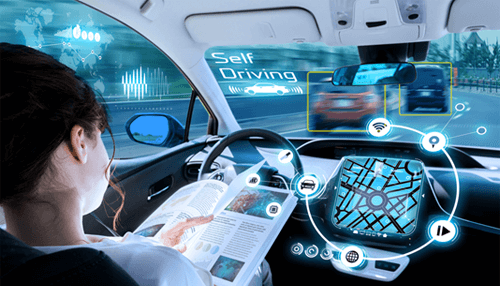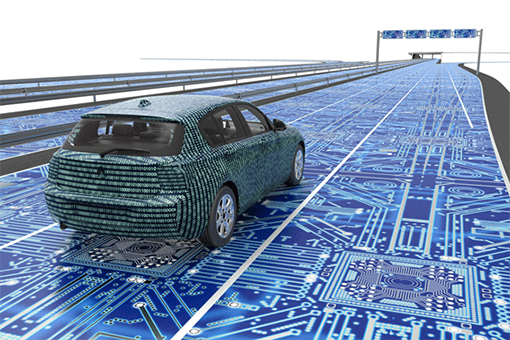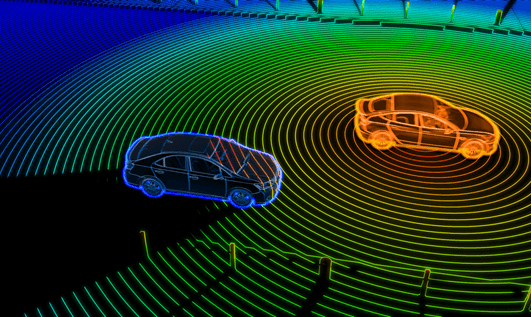We’ve been hearing about the possibility of self-driving vehicles for some time now, but what does it take for a car to drive itself? Just a few years ago, this technology sounded like something out of the distant future, but it may be closer to becoming reality than you might think.
Here are some of the biggest innovations driving autonomous vehicles:
The Blockchain
The blockchain is quietly changing the way the world does business. It’s made up of a series of individual ledgers, each representing a specific transaction. This series of ledgers cannot be altered in any way. The system also protects the privacy of anyone involved in the transaction.
When it comes to self-driving cars, the blockchain will likely be used to support direct payment methods when there’s no one behind the wheel. When passengers pay for a ride, such as those offered by Uber and Lyft, it will be stored in the blockchain for fast, secure payments on the go.
Every vehicle would essentially create its own payment history as it completed various rides throughout the day. This also opens the door for ride-sharing subscription-based services. Passengers may pay a monthly or yearly fee in order to use these cars as they see fit.
Data Analytics
Vehicles will access large swathes of data to operate remotely. They will need to sense their surroundings while navigating to the destination. The latest vehicles come with built-in sensors and cameras for recording their surroundings, but companies need to be able to turn this data into actionable results.
Driving can be anything but predictable. Poor weather, construction and other variables make it difficult for cars to drive autonomously. They may not be equipped to handle these curveballs. Human drivers typically make thousands of decisions behind the wheel without even realizing it. The car would have to do the same in order to complete the trip when faced with the unexpected.
That’s why data is so crucial to the success of self-driving cars. Programs like the blockchain make it easy to store virtually every detail from a person’s trip. As manufacturers develop this technology, the smarter these cars will be. Every car will learn from the previous excursion as it slowly develops the insight to think for itself when faced with different types of challenges.
Self-driving cars will be able to collect data on the existing infrastructure as well, including the condition of roads, bridges, and other factors that affect driving conditions. The car will also record its own performance, so technicians know when to set the car aside for maintenance.
This helps each car prepare for the journey ahead while keeping passengers safe and sound. Customers can use this information to track the company’s performance on the road. The safest software program will eventually win out as automakers compete for the title of the world’s safest self-driving car.
The 5G Revolution
Self-driving cars have traditionally relied on 4G technology, which allows for the streaming of video and data. But the 5G revolution is gaining steam. It was first deployed in 2019 and is considered the eventual successor of 4G.
This new form of interconnectivity will increase the car’s functionality on the road. Instead of sending data back to the original server, 5G-connected vehicles will be able to communicate with each other and even nearby infrastructure in real-time.
Every aspect of the road, including signs, toll booths and other markers, will talk back to the car as it navigates the open road. This will help the car prepare for potential roadblocks along the way, including construction, weather and other potential hazards. The system will alert the driver as well, helping them avoid a possible collision.
5G will also help with a possible increase in traffic. As these cars learn to communicate with each other, they will learn to move in tandem at faster speeds, so passengers can get where they’re going as quickly as possible. Self-driving cars will never take off unless consumers see the value in driverless automation.
Roadblocks for Self-Driving Cars
Despite these major breakthroughs, we’re still a long way from everyone taking self-driving cars to work.
Tesla has been leading the charge for several years now. CEO Elon Musk has been making bold predictions in terms of the future of autonomous vehicles, but the company ran into trouble back in 2019 when one of its self-driving vehicles crashed into a tree in Texas, killing two passengers. Firefighters ended up using 30,000 gallons of water to put out the fire because the car’s battery kept reigniting.
Musk defended his company’s safety track record, saying the car’s Autopilot feature hadn’t been engaged, but the incident got the attention of lawmakers, who are now asking for more regulation to prevent these kinds of accidents from happening again.
Tesla has been tinkering with its Autopilot feature for several years. Drivers have the option of driving the car themselves or letting the machine take over. But this program has yet to go mainstream.
One of the major sticking points is that virtually all U.S. roads are designed for human drivers, not machines. As Musk admitted earlier this year, “A major part of real-world AI has to be solved to make unsupervised, generalized full self-driving work, as the entire road system is designed for biological neural nets with optical imagers.”
The U.S. would need to invest billions of dollars in smart transportation infrastructure, including sensors, cameras, and the Internet of Things, all of which would need to communicate with self-driving cars as they pass by.
Despite the potential for self-driving cars, there’s only so much manufacturers can do to bring the rest of the world up to speed. It may be several years, if not decades, before every road is fitted with the proper technology.
If your automotive company is looking to take advantage of these trends, use a metal bin to safely store and transport highly complex pieces of technology. Use a bulk container to keep your warehouse moving at peak efficiency during this period of transition in the automotive industry.




